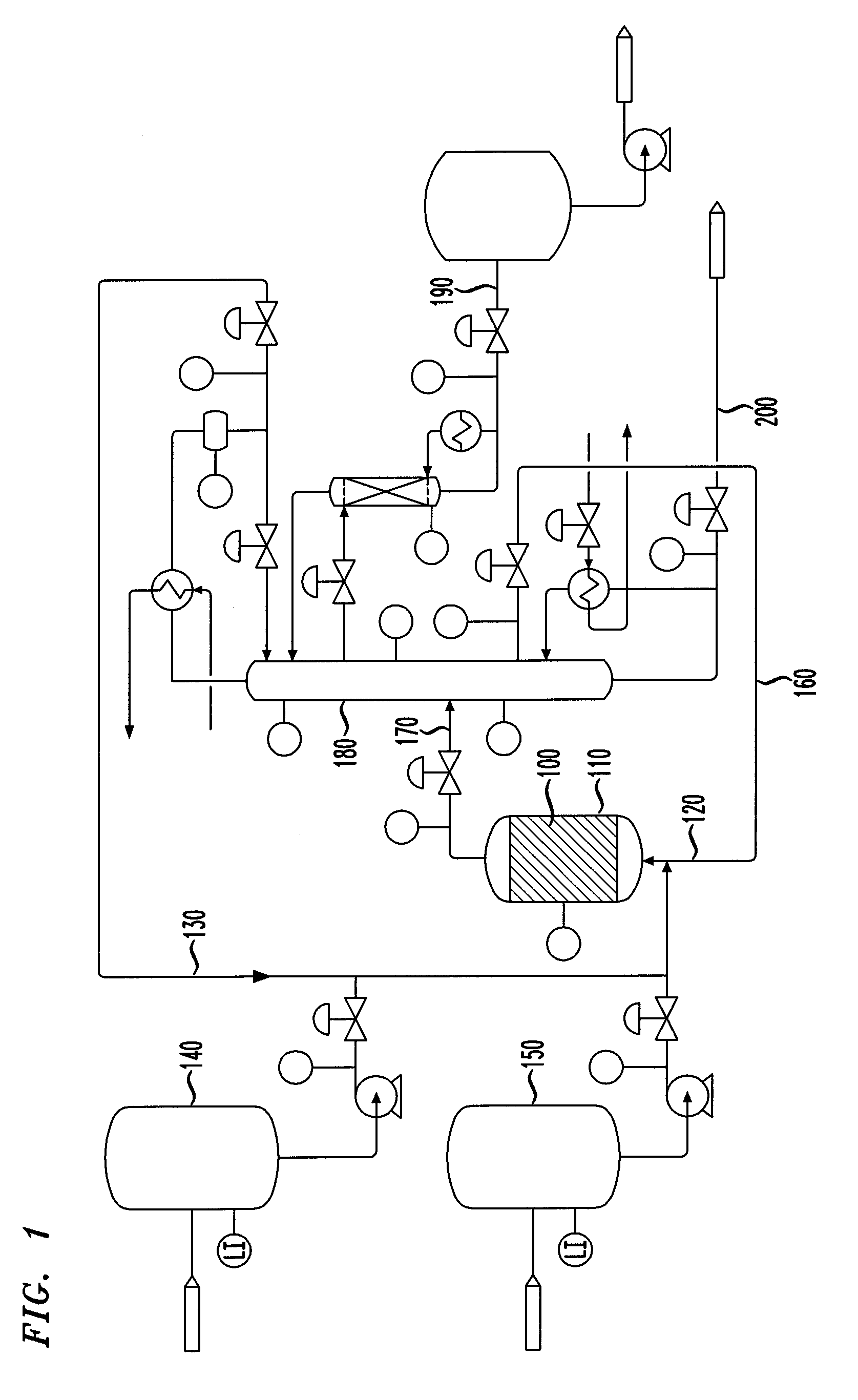Isomerization of olefins with carboxylic acid
a technology of olefins and carboxylic acids, which is applied in the direction of organic compounds/hydrides/coordination complex catalysts, organic chemistry, physical/chemical process catalysts, etc., can solve the problems of hydrocarbon cracking and oligomerization, and high energy consumption
- Summary
- Abstract
- Description
- Claims
- Application Information
AI Technical Summary
Benefits of technology
Problems solved by technology
Method used
Image
Examples
example 1
[0029] In a glass reactor, a mixture of 24 g of 1-hexadecene and 12 g of Amberlyst 15 Dry was stirred under nitrogen at 100° C. After 40 minutes, the C16 olefin had thoroughly isomerized to a substantially random distribution of linear internal positional isomers. The level of linear 2-alkenes in the hexadecene had reached about 15%. The level of dimer in the olefin was 11 weight percent.
example 2
[0030] In a glass reactor, a mixture of 12 g Amberlyst 15 Dry and 24 g of a solution of 6.5 weight percent propionic acid in 1-hexadecene was stirred under nitrogen at 110° C. After 5 hours, the C16 olefin had thoroughly isomerized to a more random distribution of linear internal positional isomers. The level of 2-hexadecenes among the C16 olefins initially rose and then dropped to 15-17%. The level of dimer in the olefin was 7 weight percent.
example 3
[0031] In a glass reactor, a mixture of 12 g Amberlyst 15 Dry and 24 g of a solution of 10 weight percent propionic acid in 1-hexadecene was stirred under nitrogen at 110° C. After 4.5 hours, the C16 olefin had thoroughly isomerized to a more random distribution of linear internal positional isomers. The level of 2-hexadecenes among the C16 olefins initially rose and then dropped to 15-17%. The level of dimer in the olefin was 3.5 weight percent.
PUM
| Property | Measurement | Unit |
|---|---|---|
| weight percent | aaaaa | aaaaa |
| weight percent | aaaaa | aaaaa |
| weight percent | aaaaa | aaaaa |
Abstract
Description
Claims
Application Information
 Login to View More
Login to View More - R&D
- Intellectual Property
- Life Sciences
- Materials
- Tech Scout
- Unparalleled Data Quality
- Higher Quality Content
- 60% Fewer Hallucinations
Browse by: Latest US Patents, China's latest patents, Technical Efficacy Thesaurus, Application Domain, Technology Topic, Popular Technical Reports.
© 2025 PatSnap. All rights reserved.Legal|Privacy policy|Modern Slavery Act Transparency Statement|Sitemap|About US| Contact US: help@patsnap.com


